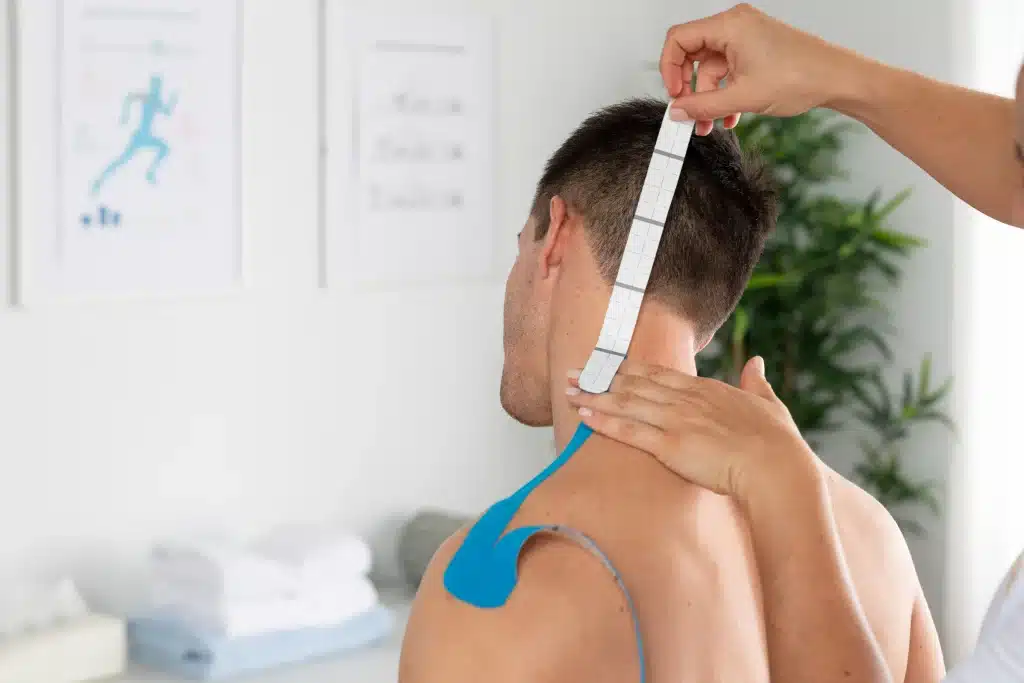Billing for chiropractic services can feel like a maze, but understanding how to use the GP modifier can simplify the process and boost your reimbursements. This small yet powerful tool ensures your claims clearly communicate the value and necessity of the care you provide, helping you get paid faster and more accurately. In this article, we’ll break down how the GP modifier works, why proper documentation matters, and share real-world success stories from GP Modifier chiropractic practices. With these tips, you’ll be well on your way to streamlining your billing and maximizing your practice’s financial health.

Impact of the GP Modifier Chiropractic on Reimbursements
The utilization of the GP modifier chiropractic practices significantly influences reimbursement rates. By indicating that services rendered are part of a physical or occupational therapy plan, this modifier enhances the clarity of claims submitted to insurers. Proper application ensures that service providers receive appropriate compensation for the interventions they perform, contributing to a more accurate representation of services and justifying the clinical necessity of the treatments provided.
Incorporating the GP modifier can lead to improved cash flow for chiropractic offices. Accurate labeling of services streamlines the billing process, minimizing the likelihood of claim denials or delays. This practice not only supports timely payments but also fosters stronger relationships between chiropractic providers and insurance companies. By adhering to the guidelines for the GP modifier chiropractic, practices position themselves advantageously within the healthcare reimbursement landscape.
How Proper Use Affects Payment Processes
The GP modifier plays a critical role in the reimbursement process, particularly for physical therapy and chiropractic services. By designating specific treatments as medically necessary, this modifier helps ensure that claims accurately reflect the nature of the service provided. Correct usage clarifies the intent behind treatments, allowing for smoother processing within payer systems. Inadequate or incorrect application of the GP modifier Chiropractic may lead to denials or delayed payments, impacting providers’ cash flow and operational efficiency.
Documentation is essential to bolster the proper application of the GP modifier Chiropractic. Clinicians must maintain thorough records, including treatment notes and progress reports, to support claims. The ability to substantiate the need for services using the GP modifier can significantly affect payment timelines. In this context, providers should prioritize compliance with documentation standards to enhance their reimbursement prospects while minimizing administrative burdens. This disciplined approach not only mitigates payment issues but also aligns with best practices for maintaining revenue integrity.
| Aspect | Impact of Proper Use | Consequences of Improper Use |
|---|---|---|
| Application of GP Modifier | Ensures claims reflect medically necessary services | Claims may be denied or delayed |
| Documentation Standards | Enhances chances of timely reimbursements | Increases burden of administrative follow-up |
| Record Keeping | Supports claims with necessary treatment evidence | May result in cash flow issues for providers |
| Provider Training | Improves compliance with billing practices | Leads to inconsistent application of modifiers |

Documentation Requirements for GP Modifier Chiropractic
Accurate documentation is essential for effectively utilizing the GP modifier Chiropractic within reimbursement processes. Clinicians must ensure that all relevant records reflect the use of the modifier when required. This includes clear notes on the patient's condition, treatments administered, and the specific reason for using the GP modifier. Proper documentation not only validates the modifier’s use but also strengthens claim submissions, minimizing the chances of denials from payers.
In addition to treatment notes, it is crucial to maintain consistent and organized patient records. Documentation should encompass detailed descriptions of the patient's progress and the services provided. This comprehensive approach supports the justification for applying the GP modifier, allowing for smoother audits and reviews by insurance providers. Maintaining thorough documentation ultimately contributes to efficient billing cycles and assures compliance with industry regulations.
Essential Records to Support Claims
Records play a crucial role in supporting claims associated with the GP modifier. Accurate documentation not only helps establish the necessity of services but also ensures alignment with compliance requirements. Relevant patient information, including treatment plans and therapy notes, must be meticulously recorded. These documents demonstrate the medical need for the services rendered, aiding in navigating the reimbursement landscape seamlessly.
Furthermore, gathering and maintaining essential records fosters a systematic approach to claim submissions. Integrating detailed progress notes and evaluation results can significantly strengthen claims, enabling chiropractic practices to substantiate their services effectively. Keeping track of related diagnostic codes and treatment durations enhances the accuracy of claims, leading to more favorable reimbursement outcomes. This diligent documentation reflects the quality of care provided, reinforcing the credibility of the practice in the eyes of insurers.
Case Studies
Implementing the GP modifier can significantly enhance patient care within chiropractic practices. One notable case involved a clinic that meticulously adhered to documentation requirements when utilizing this modifier. As a result, they saw a marked improvement in reimbursement rates. By incorporating the GP modifier in conjunction with comprehensive treatment notes, the clinic effectively demonstrated the medical necessity of services, leading to fewer claim denials.
Another example comes from a multi-practitioner facility that conducted training sessions for staff on the proper use of the GP modifier. The focus on education ensured that all practitioners understood how to apply the modifier accurately. This concerted effort not only streamlined the billing process but also fostered better communication among team members. Consequently, the clinic experienced a notable decrease in claim rejection rates and an increase in overall revenue, demonstrating the importance of the GP modifier Chiropractic care.

Real-Life Examples in Chiropractic Practices
Chiropractic practices have successfully integrated the GP modifier into their billing processes, resulting in improved reimbursement rates. One notable example involves a clinic that specializes in spinal adjustments. By consistently applying the GP modifier for services deemed medically necessary, they experienced a notable reduction in claim denials. This strategic use not only streamlined their payment processes but also ensured compliance with documentation standards.
Another example can be observed in a multi-disciplinary practice that includes physical therapy services alongside chiropractic care. By utilizing the GP modifier correctly, they showcased the medical necessity of treatments rendered to patients with chronic pain. This approach enhanced their credibility during audits and increased overall patient satisfaction, demonstrating that effective documentation and proper modifier usage can lead to better financial outcomes in the chiropractic field.
Future Trends in Modifier Use
The landscape of medical billing is rapidly evolving, with modifiers playing an increasingly pivotal role in ensuring adequate reimbursements. As the healthcare industry moves towards value-based care, the utilization of modifiers like the GP modifier will become more prominent. This shift necessitates a deeper understanding of these modifiers among healthcare providers, particularly in fields such as chiropractic care. Providers must stay updated on regulatory changes and coding best practices to effectively leverage modifiers for improved claims processing and compliance.
Technological advancements are set to further influence the use of modifiers in the coming years. The integration of sophisticated billing software and artificial intelligence tools can streamline the claims process, reducing errors associated with modifier applications. Enhanced data analytics will enable practitioners to identify trends and patterns related to modifier use, thereby improving operational efficiency. By embracing these future trends, healthcare providers can optimize their reimbursement strategies and adapt to ongoing changes in the medical billing environment.





